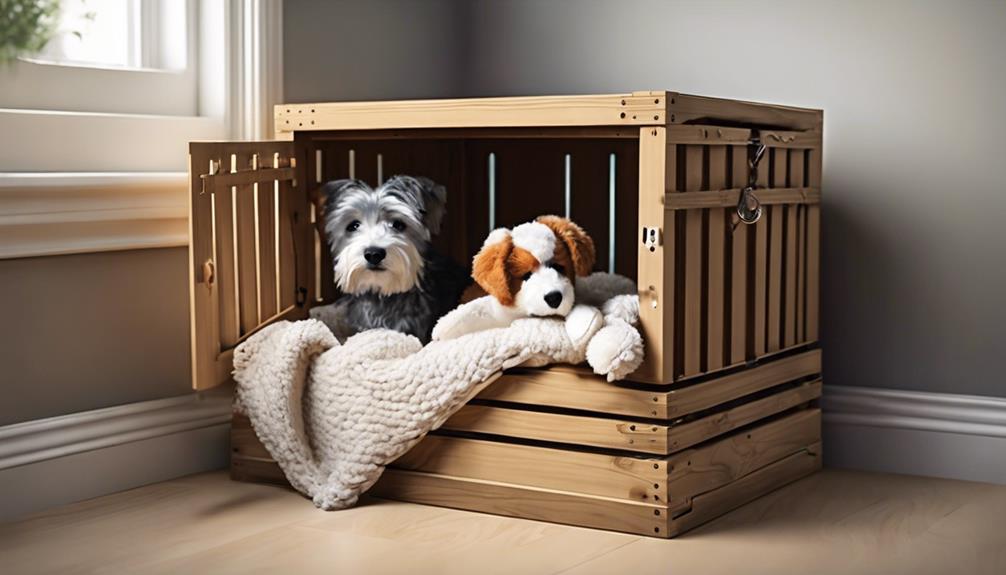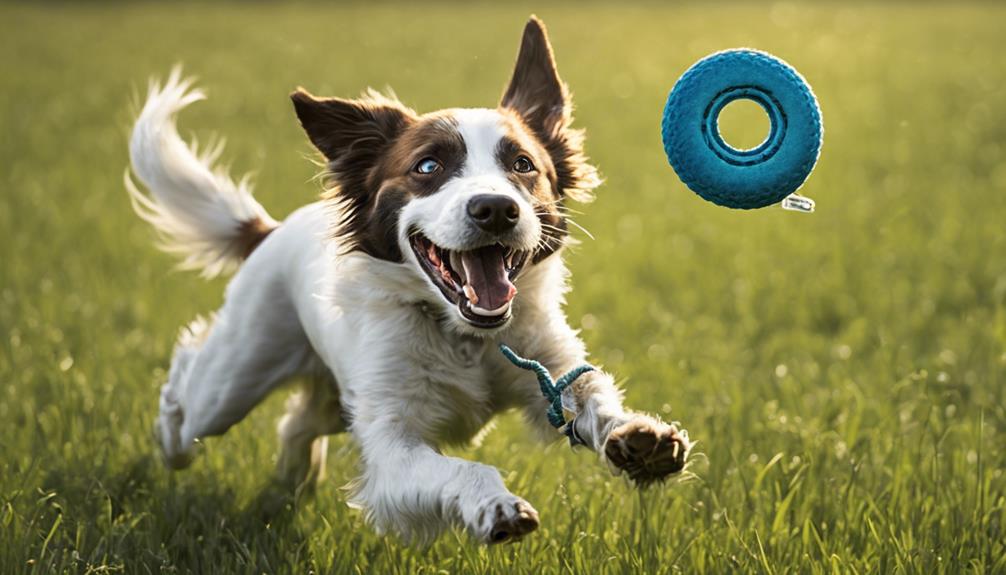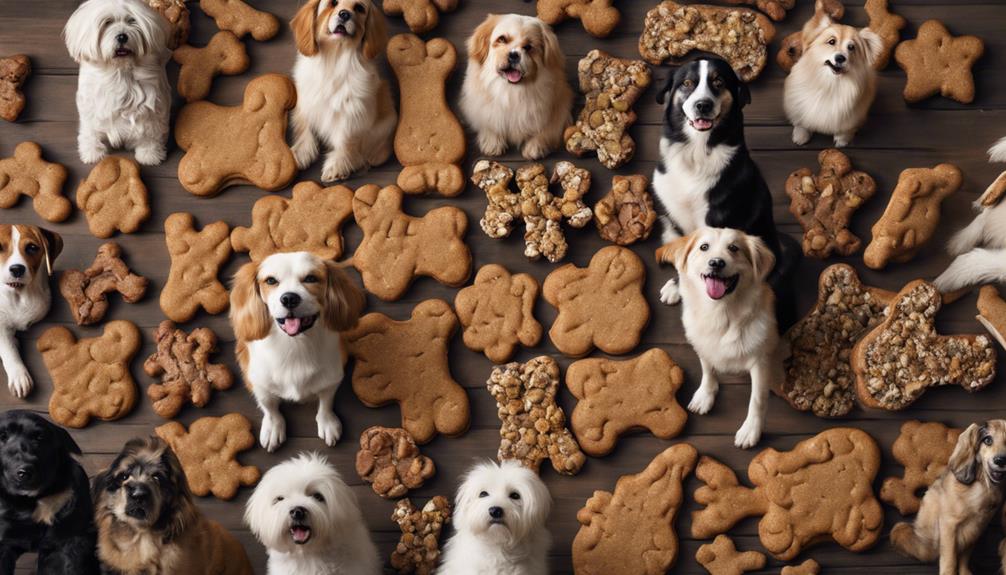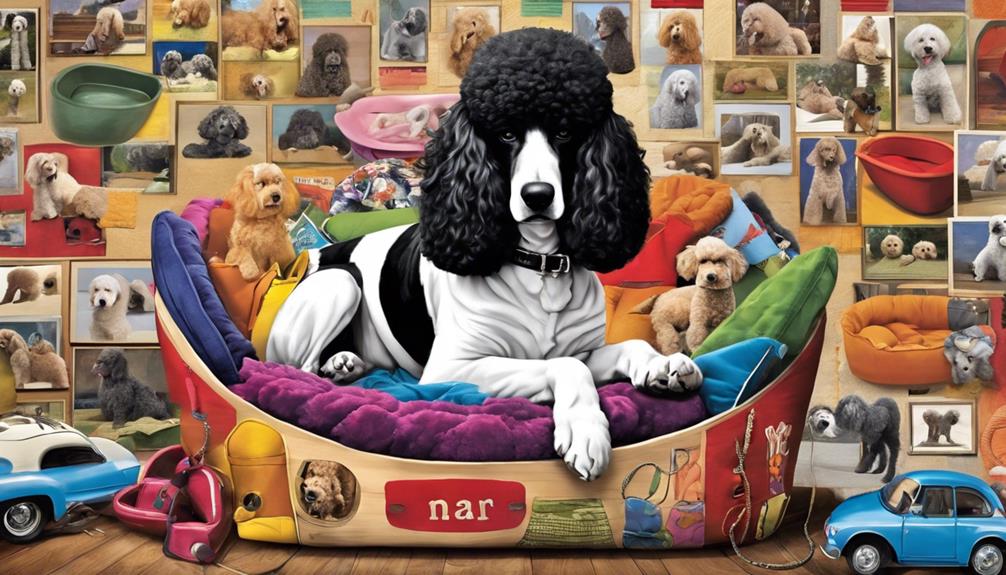Start your journey to becoming an expert in puppy crate training with the ultimate PDF guide. Explore the advantages of crate training, which include creating a secure and peaceful space that resembles a den-like setting, assisting in housebreaking, and alleviating anxiety. Gain knowledge on the correct methods, such as utilizing positive reinforcement, slowly increasing time spent in the crate, and offering comforting items. Tackle worries and misunderstandings, like concerns about aggression, by employing positive reinforcement techniques.
With a focus on short sessions and adjusting to your puppy's age and bladder capacity, the guide helps you establish a daily schedule with specific times for activities, ensuring consistency for successful training. Remember, implementing these practices will pave the way for a harmonious training experience for both you and your furry friend.
Key Takeaways
- Establish a daily routine with set crate times.
- Gradually increase crate time for comfort and training.
- Use positive reinforcement techniques consistently.
- Incorporate mental stimulation to keep your puppy engaged.
- Monitor behavior for safety and adjust schedule as needed.
Benefits of Crate Training
Crate training benefits puppies by providing them with a secure and calming environment that reduces stress and promotes positive behaviors. This safe space mimics a den-like setting, catering to your puppy's natural instincts for comfort and security. By incorporating crate training into your puppy's routine, you're aiding in their housetraining efforts. Puppies instinctively avoid soiling their living areas, making the crate an effective tool in teaching them to hold their bladder and bowels until they're taken outside. This not only helps in preventing accidents inside the house but also establishes a routine that fosters good potty habits.
Moreover, crate training encourages positive behaviors in puppies. It teaches them to chew on appropriate items, like toys, instead of household objects. Additionally, the crate provides a designated space for your puppy to rest quietly, promoting relaxation and reducing anxiety. Overall, crate training sets the foundation for a well-behaved and disciplined canine companion.
Proper Techniques for Crate Training

To effectively crate train your puppy, focus on using positive reinforcement techniques and gradually increasing their time spent in the crate to help them adjust comfortably. Here are some proper techniques for crate training:
- Use positive reinforcement: Encourage your puppy to enter the crate willingly by offering treats and praise. This creates a positive association with the crate.
- Gradually increase crate time: Start with short periods and slowly extend the duration as your puppy becomes more comfortable. This helps guarantee a successful training process and prevents anxiety.
- Avoid forcing entry: Never push or drag your puppy into the crate. This can create negative associations and resistance towards being crate trained.
- Provide comfort items: Make the crate a cozy space by adding blankets, toys, or clothing with your scent. This helps your puppy feel secure and relaxed inside.
Addressing Concerns and Misconceptions
Addressing concerns and misconceptions surrounding crate training is important for understanding its true value and benefits. Crate training is often misunderstood, with some fearing that it may lead to aggression in dogs. However, it's essential to emphasize that aggression stemming from crate training is usually due to misuse or misinterpretation of the method, rather than the technique itself. When done responsibly, crate training can actually help prevent anxiety and behavioral issues in dogs.
To avoid any negative outcomes, it's vital to incorporate positive reinforcement techniques and make sure that your dog receives proper care and exercise while being crated. Misconceptions about crate training shouldn't deter you from utilizing this valuable tool; instead, seek guidance and resources to implement it effectively. Remember, crate training, when used responsibly, can provide a safe and secure space for your puppy, aiding in their overall development and well-being.
Duration of Crate Training Sessions

When starting crate training with your puppy, remember to keep the sessions short, ideally around 30 minutes to an hour. Adjust the duration based on your puppy's age and bladder capacity, as they can typically hold their bladder for their age in months plus one.
Gradually increase the time spent in the crate as your puppy gets more comfortable and reliable with potty training.
Session Length Recommendations
Start crate training sessions for puppies under 6 months old with a duration of 30-60 minutes to establish a positive association with the crate. Here are some session length recommendations for effective crate training:
- Puppies under 6 months: Keep sessions between 30-60 minutes to prevent stress.
- Adult dogs: Extend sessions to 4-8 hours based on individual needs.
- Potty training: Offer shorter sessions every 2-3 hours for young puppies.
- Gradual increase: Lengthen sessions as your puppy becomes comfortable in the crate.
Incremental Training Approach
To build upon the recommended session lengths for crate training, consider implementing an incremental training approach by gradually increasing the duration of each session for your puppy. Begin with short durations of 15-30 minutes to acclimate your puppy to the crate. Slowly extend these sessions over time, aiming for 3-4 hours as your puppy grows more accustomed to the space. Remember to provide regular breaks for your puppy to relieve themselves, play, and exercise between crate training sessions. Consistency is key in this incremental approach, helping your puppy adjust to longer periods in the crate without feeling overwhelmed. Monitor your puppy's behavior and comfort level closely during these sessions to ensure a positive training experience.
| Session Duration | Description | Purpose |
|---|---|---|
| 15-30 minutes | Short initial sessions to introduce the crate | Familiarize puppy with the crate environment |
| 1-2 hours | Gradually extend time spent in the crate | Build comfort and confidence in the crate |
| 2-3 hours | Further increase duration within the crate | Enhance tolerance to longer confinement |
| 3-4 hours | Reach best crate training duration | Prepare puppy for more extended periods |
Creating a Puppy Crate Training Schedule

When creating a puppy crate training schedule, it's essential to establish a daily routine that includes feeding times, potty breaks, playtime, and crate sessions.
Make sure to follow guidelines on training duration, gradually increasing the time your puppy spends in the crate as they grow older.
Daily Routine Planning
How can you effectively structure a daily routine for your puppy's crate training? Follow these steps to create a successful schedule:
- Set Specific Times: Designate times for feeding, potty breaks, playtime, and crate rest to establish a consistent routine.
- Ensure Consistency: Stick to the schedule to help your puppy adapt and learn the expected routine.
- Gradual Increase: Increase crate time gradually throughout the day to help your puppy adjust to longer periods in the crate.
- Use Positive Reinforcement: Utilize treats and positive reinforcement to make crate time a positive experience for your puppy.
Training Duration Guidelines
Designing a successful puppy crate training schedule involves establishing clear training duration guidelines to guarantee your puppy's progress and comfort. Crate training typically spans from a few weeks to six months, depending on your dog's consistency and progress.
To guarantee positive outcomes, maintain consistency and patience throughout the process. It's vital to gradually increase the time your puppy spends in the crate to aid in their comfort and development. Monitor your puppy's behavior closely and adjust the training schedule as needed to achieve the desired results.
Implementing Crate Training Practices

To successfully implement crate training practices, start by gradually increasing the time your puppy spends in the crate in 30-minute increments to help them acclimate comfortably. Here are some key steps to follow:
- Use Positive Reinforcement: Encourage your puppy to enter the crate willingly by offering treats and praise. This creates a positive association with the crate, making it a welcoming space for them.
- Guarantee Appropriate Crate Size: Make sure the crate is large enough for your puppy to stand, turn around, and lie down comfortably. A crate that's too small can cause discomfort and anxiety.
- Establish a Consistent Routine: Create a schedule for meal times, potty breaks, and crate time. Consistency is key in helping your puppy understand expectations and feel secure in their training.
- Monitor Behavior and Adjust: Keep an eye on your puppy's reactions during crate training. If they show signs of distress or discomfort, adjust the training schedule as needed to ensure a positive experience.
Tips for Successful Crate Training

For successful crate training, gradually increasing your puppy's crate time in small increments is key to building their comfort and tolerance. By doing so, you help them see the crate as a safe and positive space. Utilize positive reinforcement techniques such as treats and praise to create a rewarding association with the crate. This will make your puppy more willing to enter and stay in the crate. Additionally, incorporating mental stimulation through food puzzles or toys can keep your puppy entertained while crated, reducing stress and boredom.
| Crate Training Tips | Description |
|---|---|
| Positive Reinforcement | Use treats and praise to encourage your puppy to view the crate positively. |
| Appropriate Size | Make sure the crate allows your puppy to stand, turn around, and lie down comfortably. |
| Building Tolerance | Gradually increase crate time to help your puppy adjust and build tolerance. |
Ensuring Comfort and Safety in the Crate

To guarantee your puppy's comfort and safety in the crate, it's essential to provide a snug crate mat or bedding for them to rest on. Here are some vital tips to maintain your puppy's well-being in their crate:
- Choose the Right Size Crate: Make sure the crate is large enough for your puppy to stand up, turn around, and lie down comfortably. This allows them to move freely and not feel cramped.
- Include Safe and Appropriate Toys: Place toys in the crate to keep your puppy entertained and engaged. This helps prevent boredom and keeps them mentally stimulated.
- Avoid Hazardous Bedding: Avoid using blankets or towels that your puppy could chew on and potentially ingest. Opt for safe bedding options to prevent any health risks.
- Monitor Behavior: Regularly monitor your puppy's behavior in the crate to ensure they're safe and comfortable at all times. This helps you address any issues promptly and make adjustments as needed.
Frequently Asked Questions
What Is a Good Crate Training Schedule?
For a successful crate training schedule, start with consistent feeding and potty breaks. Increase crate time gradually based on age and bladder control. Scheduled play and exercise outside the crate are crucial. Introduce training slowly to avoid anxiety. Adjust as your puppy grows for success.
How Many Hours a Day Should I Crate Train My Puppy?
You should aim to crate train your puppy for no more than 3-4 hours a day to prevent accidents and discomfort. Remember, shorter training periods are recommended for younger puppies, gradually increasing as they grow older and more accustomed to the routine.
Is It OK to Let Puppy Cry in Crate at Night?
It's not recommended to let your puppy cry in the crate at night. Gradually acclimating them with positive associations, comfort items, and bathroom breaks before bedtime can help. Responding to their needs without rewarding crying is key.
Should You Close the Door on a Puppy Crate at Night?
Yes, you should shut the door on a puppy crate at night. It can assist in housetraining by limiting accidents. Gradually increase crate time for your puppy's comfort. Make sure the space is welcoming for positive associations.
Is the Ultimate Puppy Crate Training Schedule Suitable for a 12-Week-old Puppy?
Yes, the ultimate puppy crate training schedule is suitable for a 12-week-old puppy. Introducing a routine that includes feeding, potty breaks, and playtime will help with crate training. Consistency is key to success, and following a schedule will help your puppy adapt to their new environment.
Conclusion
Now that you've mastered the art of crate training, your puppy will surely be a model citizen in no time.
Remember, consistency is key, and soon enough, your furry friend will love their crate as their safe haven.
So keep up the good work, and watch as your pup becomes a crate-training pro right before your eyes.
Happy training!










